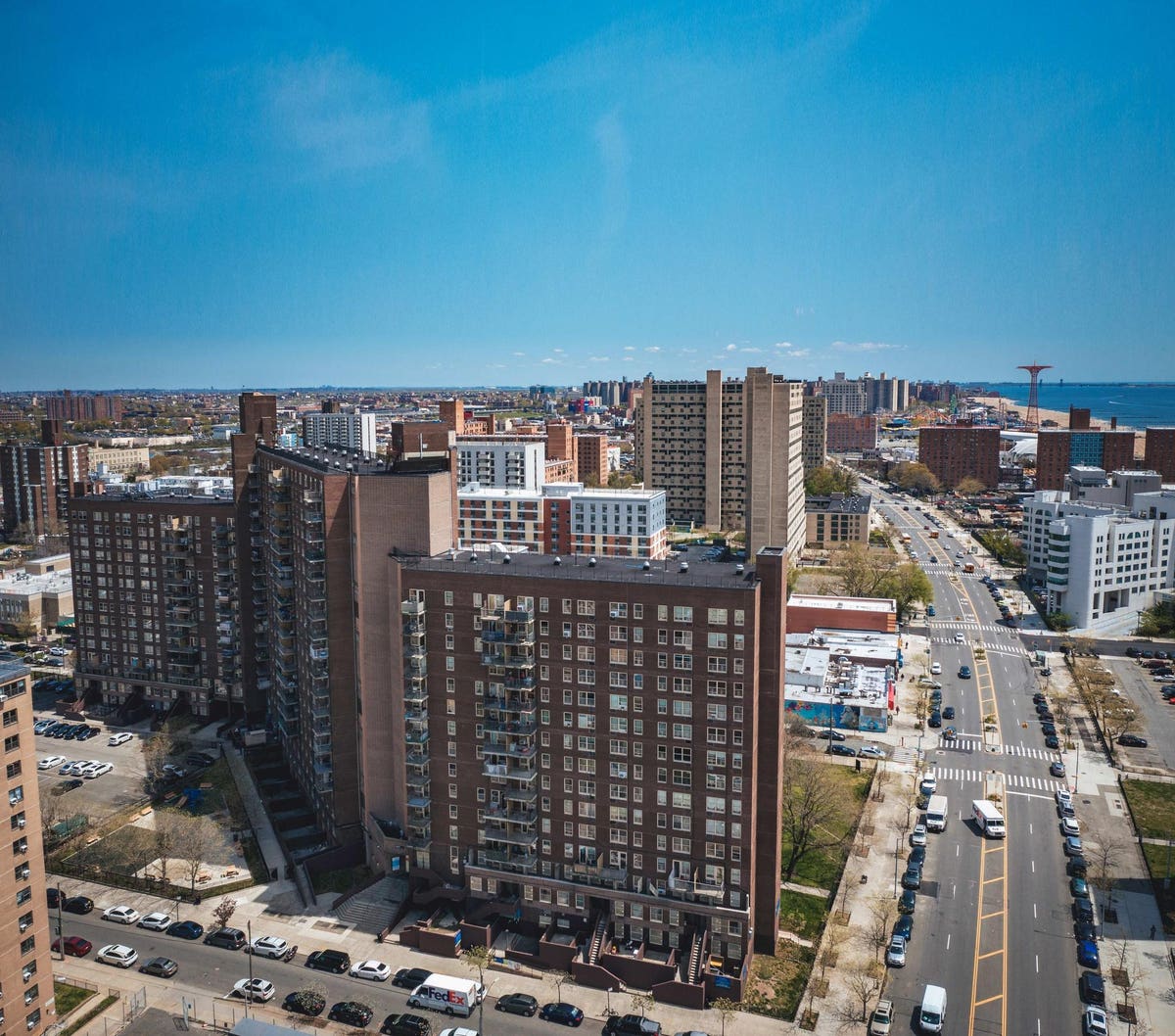Affordable housing accounted for approximately 43% of New York City’s $3.91 billion in multifamily sales in 2Q 2023, according to Ariel Property Advisors’ Q2 2023 Multifamily Quarter in Review report.
Major mission-driven investors including Nuveen, The Vistria Group, Tredway and Asland Capital Partners in association with Goldman Sachs made sizable affordable housing acquisitions across the boroughs in the second quarter, which contributed to the significant boost in dollar volume. In addition to preserving and producing affordable housing, investments in this asset class are attractive because they offer access to dedicated capital, value creation opportunities, property tax incentives, agency financing and scale, all of which have contributed to their substantial growth.
Mission-Driven Investors Step Up
Nuveen is one of the nation’s largest institutional managers of affordable housing and recently made a strategic decision to buy in New York City. Nuveen oversees more than $1.1 trillion in assets of which $6.4 billion is comprised of 161 affordable housing investments with approximately 32,000 units that primarily serve low-income residents earning 60% of area median income (AMI) or less.
Nuveen’s partial-interest acquisition of an affordable portfolio from Omni Holding Company for an estimated $956 million was the largest multifamily transaction in New York City in the second quarter and accounted for nearly 60% of the dollar volume invested in affordable housing during this period. The deal included 72 properties (tax lots) spread across 5,900 units in the Bronx (66% of the units), Brooklyn (21% of the units), Queens (10% of the units), and Northern Manhattan (2% of the units).
“Our goal is to meaningfully invest in the preservation and expansion of high-quality affordable housing to support the well-being of rent-burdened residents within local communities,” said Pamela West, Senior Portfolio Manager of Impact Investing at Nuveen Real Estate in a company announcement. “With the Omni transaction, we can develop and manage properties across the U.S. and achieve the desired outcomes for residents and investors.”
The Vistria Group, a private investment firm, ventured into New York City’s affordable housing market for the first time in June by making a $174 million investment in a portfolio with 1,290 units across five rent stabilized buildings; four in the Bronx and one in Northern Manhattan. The transaction was financed through a Freddie Mac originated loan by Keybank.
Eleonora Bershadskaya, Principal, Real Estate, for the Vistria Group, who was a panelist at Ariel Property Advisors’ recent Coffee and Cap Rates event, said the acquisition was appealing because the buildings have undergone significant capital improvements over the last decade and they benefit from an Article 11 tax abatement, which will be in place for the next 30 years.
“One of the most important factors was the level of affordability that will persist for a long time across the portfolio, especially in the Bronx which has seen pretty significant rent growth in the last five years,” Bershadskaya said. “Also, there are development opportunities in the borough, so having a haven of affordability in that area was important to us both from an impact and financial perspective.”
The Vistria Group, which expanded its Healthcare, Knowledge & Learning Solutions, and Financial Services sector focus last year to include affordable, mixed-income and workforce multifamily housing nationwide, is taking a long-term view when acquiring affordable housing assets as it seeks to meet a double bottom line.
“First, it’s incredibly important for us to help address the affordable housing crisis in this country,” Bershadskaya said. “Second, financially it also makes sense because when we provide that level of affordability, we have a sticky renter base with low turnover and high occupancy, which translates into lower cost and better economics for the asset.”
Tredway, a prominent New York City-based affordable housing owner-operator-developer, partnered with Gilbane Development Company and ELH Mgmt in May to acquire the Sea Park Portfolio, an affordable housing portfolio comprised of three former Mitchell Lama elevator buildings with a total of 818 units and an 89,357 square foot parcel. Ariel Property Advisors arranged the $150 million ($156/SF) sale.
The multifamily buildings include 589 units that serve households with a maximum yearly income of 60 percent of AMI, 159 units that serve those with a maximum income of 50 percent of AMI and 65 homes that serve households earning up to 80 percent of AMI. The 2023 AMI for the New York City region is $127,100 for a three-person family (100% AMI). The various regulatory agreements placed on each property are a blend of New York City Housing Authority (NYCHA) and New York City Department of Housing Preservation and Development (HPD) voucher units, non-voucher units and market rate units.
Tredway and its partners plan to embark on a multimillion-dollar rehabilitation of the entire Sea Park complex focused on quality-of-life improvements as well as strengthening its resiliency and improving the property’s energy efficiency. Of the units, 90 apartments will be set aside for formerly homeless residents and three will be reserved for superintendents. The development team also intends to build 250 new units of holistic affordable housing at the site catering to seniors.
“We are pleased to protect, preserve and produce new affordable homes at Sea Park, a framework that will increase access to opportunity for all current and future residents,” said Will Blodgett, CEO & Founder, Tredway, in the company’s announcement. “The investments we are making will lead to a more affordable, connected, diverse, healthy and vibrant community and foster economic stability for the thousands of New Yorkers who call Sea Park and the wider Coney Island neighborhood home.”
Asland Capital Partners, a private real estate investment firm specializing in multifamily and mixed-use investments, has partnered with the Urban Investment Group within Goldman Sachs Asset Management to launch the Asland Sustainable Housing Fund. In June, Asland and Goldman Sachs announced the Asland Sustainable Housing Fund’s first acquisition of the Heighliner Portfolio, an affordable housing portfolio located in Upper Manhattan and the Bronx, which includes five assets, 334 residential units, and several community focused retailers spanning nearly 250,000 square feet. Ariel Property Advisors arranged the $45.2 million transaction.
Asland and Goldman Sachs have developed a comprehensive strategy to ensure the long-term financial and physical sustainability of the Heighliner Portfolio assets that includes addressing deferred maintenance, implementing sustainability upgrades and providing resident services such as free broadband and credit-building technology. In exchange for preserving affordability, the portfolio will benefit from a long-term property tax exemption.
“We are thrilled to have successfully acquired the Heighliner Portfolio and continue on our mission of preserving affordable housing,” said James H. Simmons, III, Founder and CEO of Asland Capital Partners, in an announcement article in Citybiz. “Through our strategic collaboration with Goldman Sachs, the New York City Department of Housing Preservation and Development (HPD) and New York City Housing Development Corporation (HDC), we are confident in our ability to enhance the quality of living for our residents while ensuring the long-term viability of these valuable properties.”
This Heighliner Portfolio transaction represents the seed investment in a broader strategy for the Asland Sustainable Housing Fund, which aims to deploy an initial $250 million towards Core Plus acquisitions of Section 8, Low-Income Housing Tax Credit (LIHTC) Preservation, and mixed-income transactions, with a national mandate and an initial emphasis in New York City.
Affordable Housing Drivers
The increased demand for affordable housing illustrates how mission-driven capital sources are increasingly drawn to this sector because of its strong underlying fundamentals and incentives which include:
- Satisfying investors’ double bottom line of integrating financial success with social accountability.
- Property tax incentives and in some cases subsidies.
- Value-add opportunities in the way of increasing rents, specifically with vouchered tenants whose rents are tied to the U.S. Department of Housing and Urban Development (HUD) Fair Market Rent schedule for each unit size.
- The ability to leverage agency lenders (Fannie Mae, Freddie Mac and HUD) and city programs offered by HPD, HDC is a distinct advantage considering the scrutiny regional banks are facing since Signature Bank closed earlier this year. As a result, financing has become challenging for some multifamily deals, especially for rent stabilized assets.
My partner Victor Sozio summed up the appeal of affordable housing this way, “Not only does affordable housing continue to attract capital for CRA (Community Reinvestment Act) purposes, capital that’s designated for affordable housing, but there are still tools to work with to add value while also achieving the objectives of the respective agencies that govern and restrict these properties.”
In contrast, rent stabilized buildings, which only accounted for 10% of the second quarter multifamily sales, are seeing the lowest pricing metrics in almost two decades because the Housing Stability and Tenant Protection Act (HSTPA) of 2019 eliminated the ability to adequately increase rents to cover rising expenses and the renovation of vacant units.
What to Expect
Recent legislation, coupled with a city-driven commitment to preserving affordability, has created significant investment opportunities in affordable housing, which will result in steady returns for investors and improved living conditions for low-income housing tenants. We expect this trend to persist as investor demand remains robust for this multifamily sub-segment.
Read the full article here





